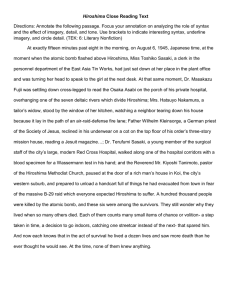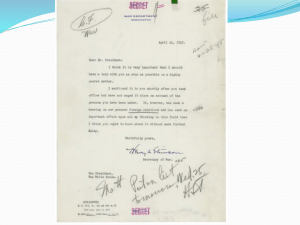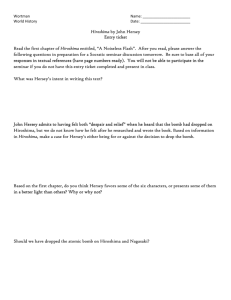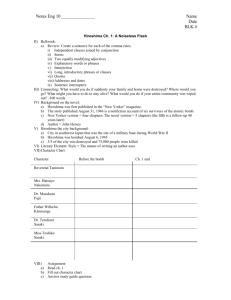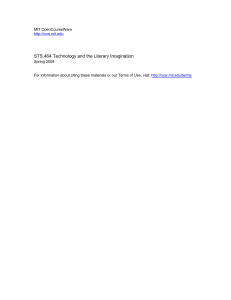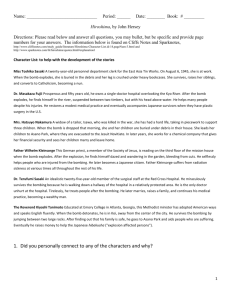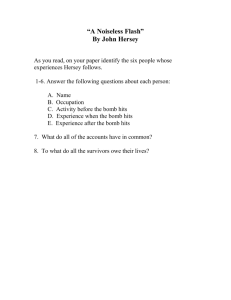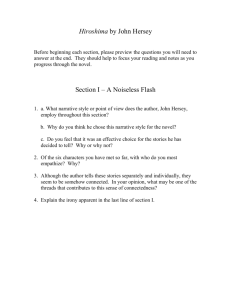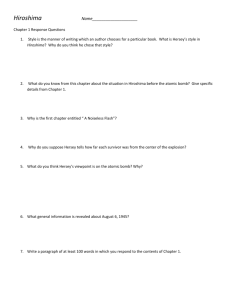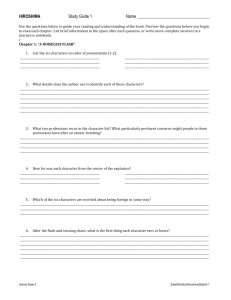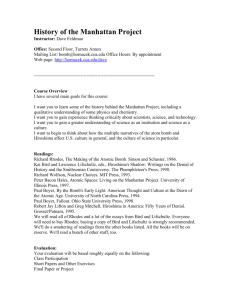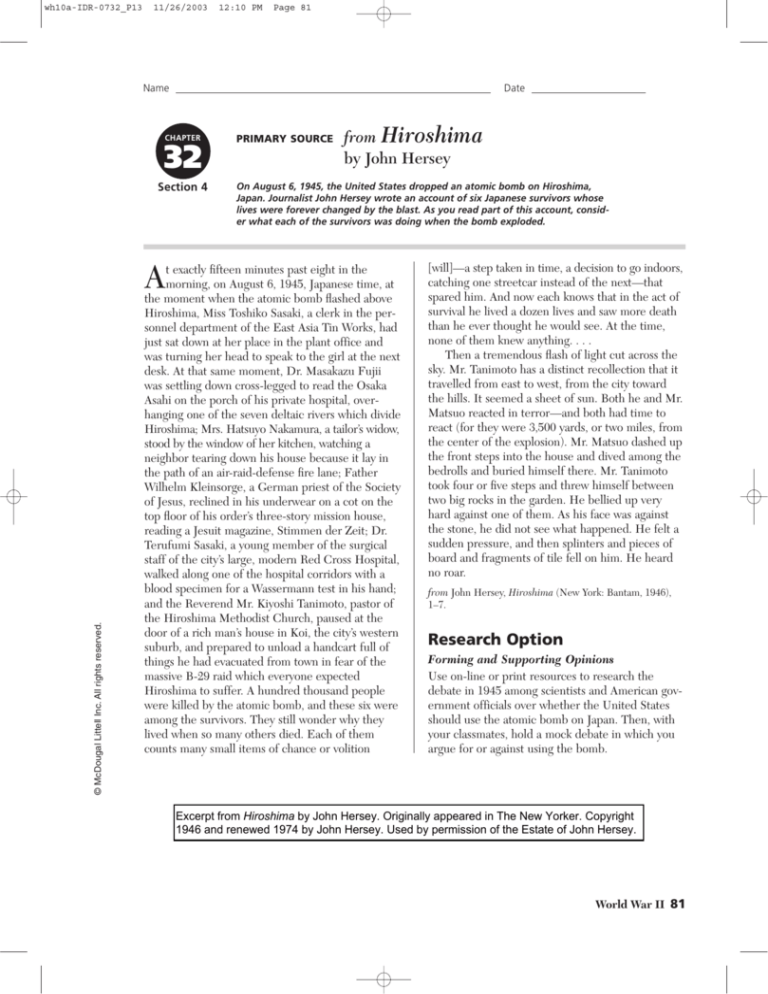
wh10a-IDR-0732_P13
11/26/2003
12:10 PM
Page 81
Name
Date
CHAPTER
32
Section 4
© McDougal Littell Inc. All rights reserved.
A
PRIMARY SOURCE
from Hiroshima
by John Hersey
On August 6, 1945, the United States dropped an atomic bomb on Hiroshima,
Japan. Journalist John Hersey wrote an account of six Japanese survivors whose
lives were forever changed by the blast. As you read part of this account, consider what each of the survivors was doing when the bomb exploded.
t exactly fifteen minutes past eight in the
morning, on August 6, 1945, Japanese time, at
the moment when the atomic bomb flashed above
Hiroshima, Miss Toshiko Sasaki, a clerk in the personnel department of the East Asia Tin Works, had
just sat down at her place in the plant office and
was turning her head to speak to the girl at the next
desk. At that same moment, Dr. Masakazu Fujii
was settling down cross-legged to read the Osaka
Asahi on the porch of his private hospital, overhanging one of the seven deltaic rivers which divide
Hiroshima; Mrs. Hatsuyo Nakamura, a tailor’s widow,
stood by the window of her kitchen, watching a
neighbor tearing down his house because it lay in
the path of an air-raid-defense fire lane; Father
Wilhelm Kleinsorge, a German priest of the Society
of Jesus, reclined in his underwear on a cot on the
top floor of his order’s three-story mission house,
reading a Jesuit magazine, Stimmen der Zeit; Dr.
Terufumi Sasaki, a young member of the surgical
staff of the city’s large, modern Red Cross Hospital,
walked along one of the hospital corridors with a
blood specimen for a Wassermann test in his hand;
and the Reverend Mr. Kiyoshi Tanimoto, pastor of
the Hiroshima Methodist Church, paused at the
door of a rich man’s house in Koi, the city’s western
suburb, and prepared to unload a handcart full of
things he had evacuated from town in fear of the
massive B-29 raid which everyone expected
Hiroshima to suffer. A hundred thousand people
were killed by the atomic bomb, and these six were
among the survivors. They still wonder why they
lived when so many others died. Each of them
counts many small items of chance or volition
[will]—a step taken in time, a decision to go indoors,
catching one streetcar instead of the next—that
spared him. And now each knows that in the act of
survival he lived a dozen lives and saw more death
than he ever thought he would see. At the time,
none of them knew anything. . . .
Then a tremendous flash of light cut across the
sky. Mr. Tanimoto has a distinct recollection that it
travelled from east to west, from the city toward
the hills. It seemed a sheet of sun. Both he and Mr.
Matsuo reacted in terror—and both had time to
react (for they were 3,500 yards, or two miles, from
the center of the explosion). Mr. Matsuo dashed up
the front steps into the house and dived among the
bedrolls and buried himself there. Mr. Tanimoto
took four or five steps and threw himself between
two big rocks in the garden. He bellied up very
hard against one of them. As his face was against
the stone, he did not see what happened. He felt a
sudden pressure, and then splinters and pieces of
board and fragments of tile fell on him. He heard
no roar.
from John Hersey, Hiroshima (New York: Bantam, 1946),
1–7.
Research Option
Forming and Supporting Opinions
Use on-line or print resources to research the
debate in 1945 among scientists and American government officials over whether the United States
should use the atomic bomb on Japan. Then, with
your classmates, hold a mock debate in which you
argue for or against using the bomb.
Excerpt from Hiroshima by John Hersey. Originally appeared in The New Yorker. Copyright
1946 and renewed 1974 by John Hersey. Used by permission of the Estate of John Hersey.
World War II 81

